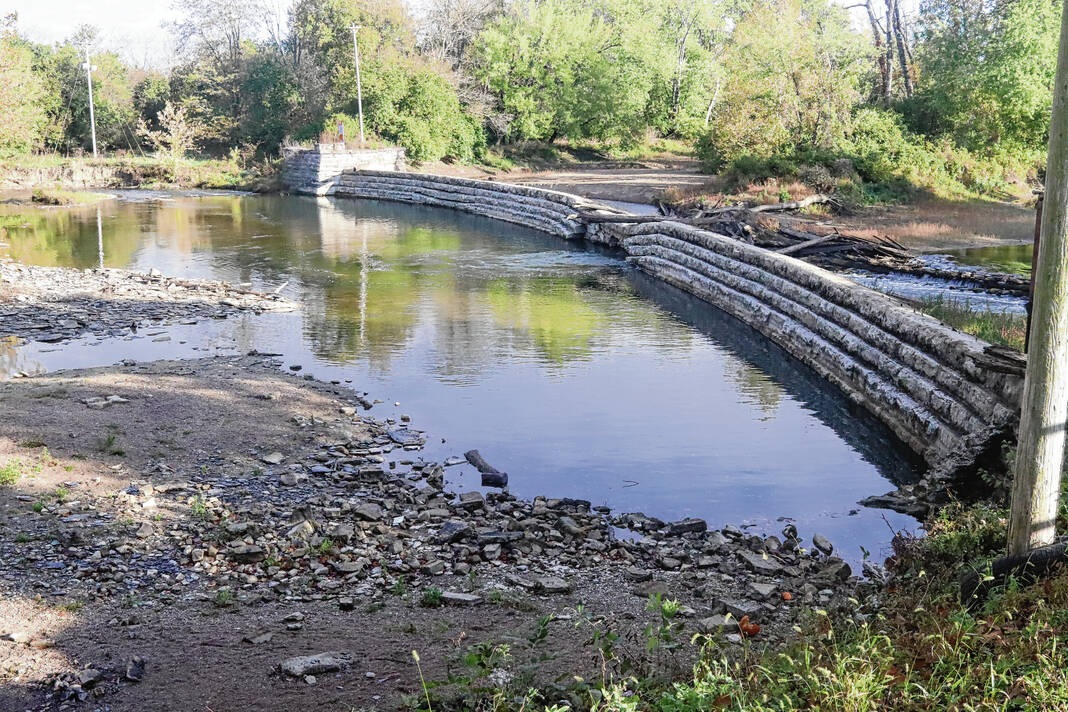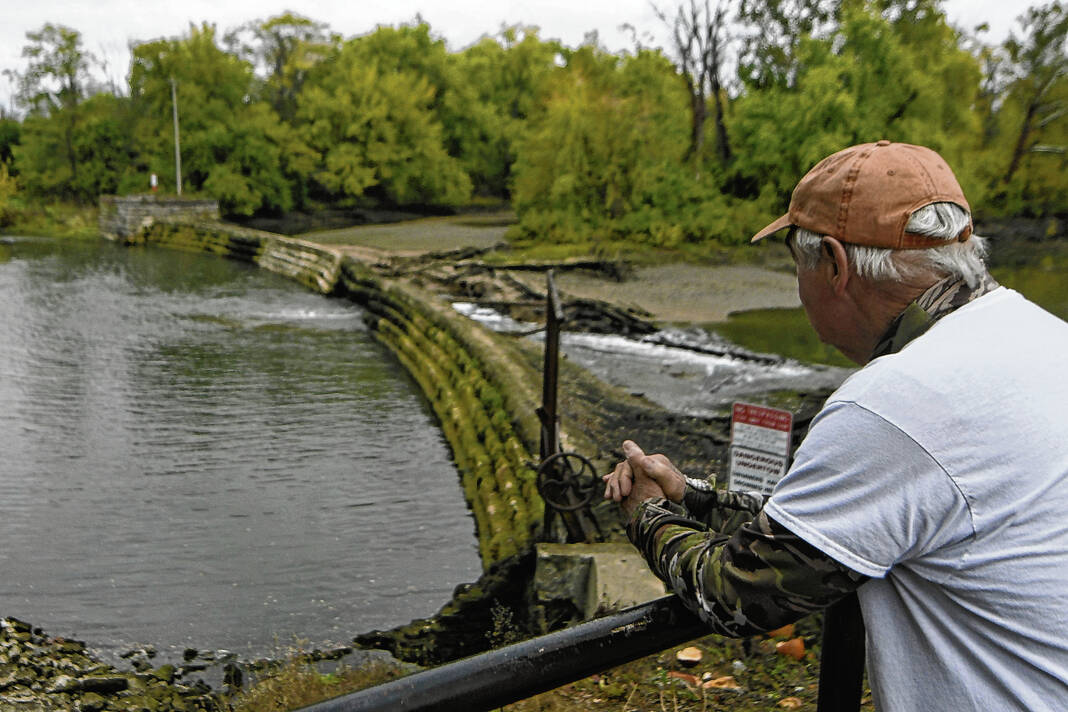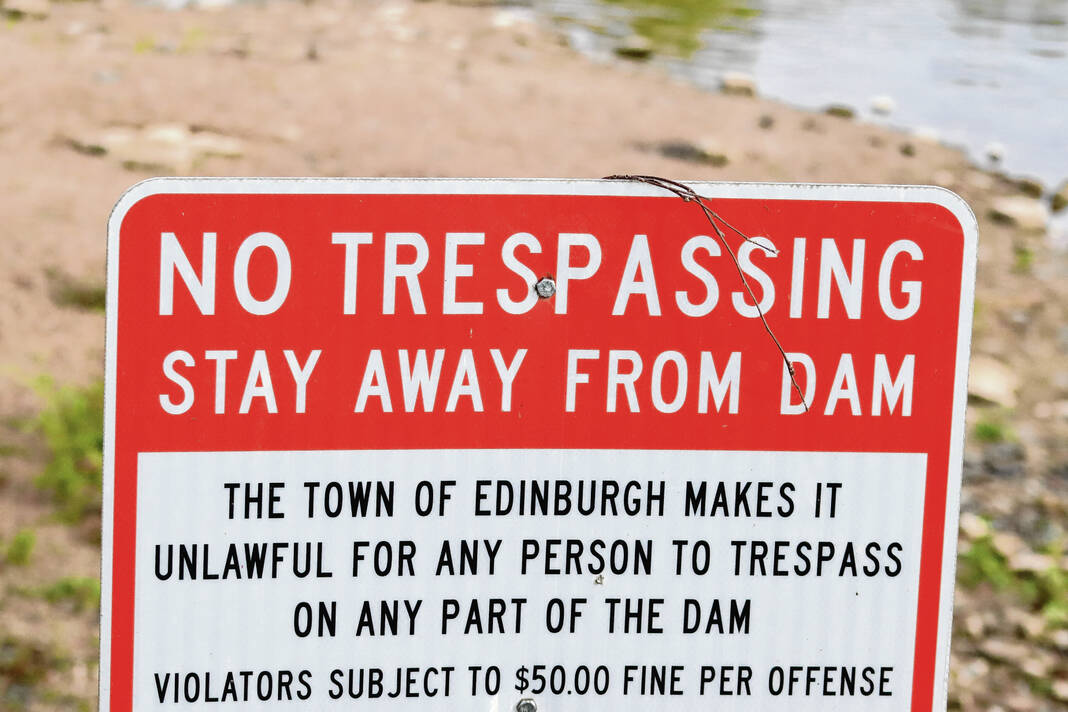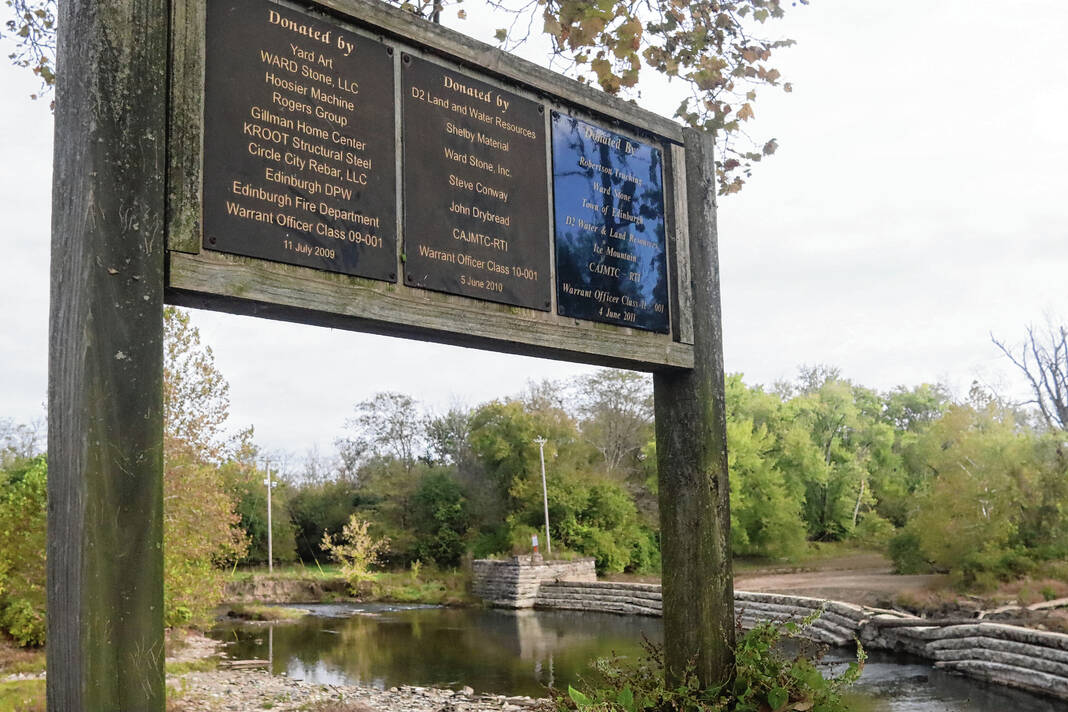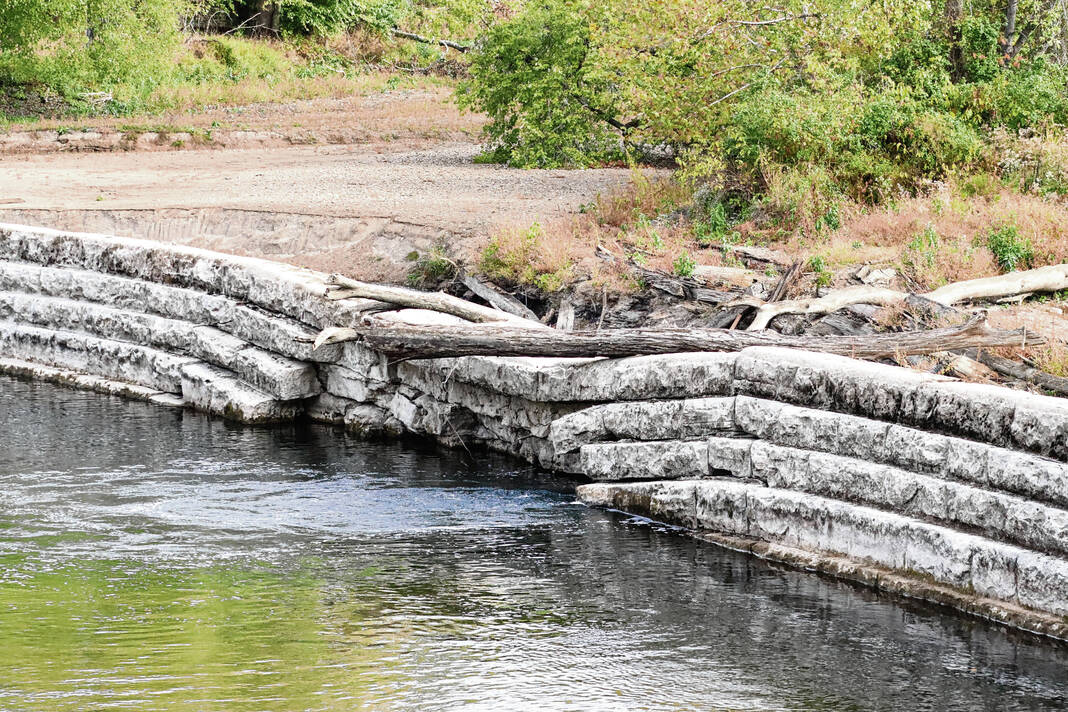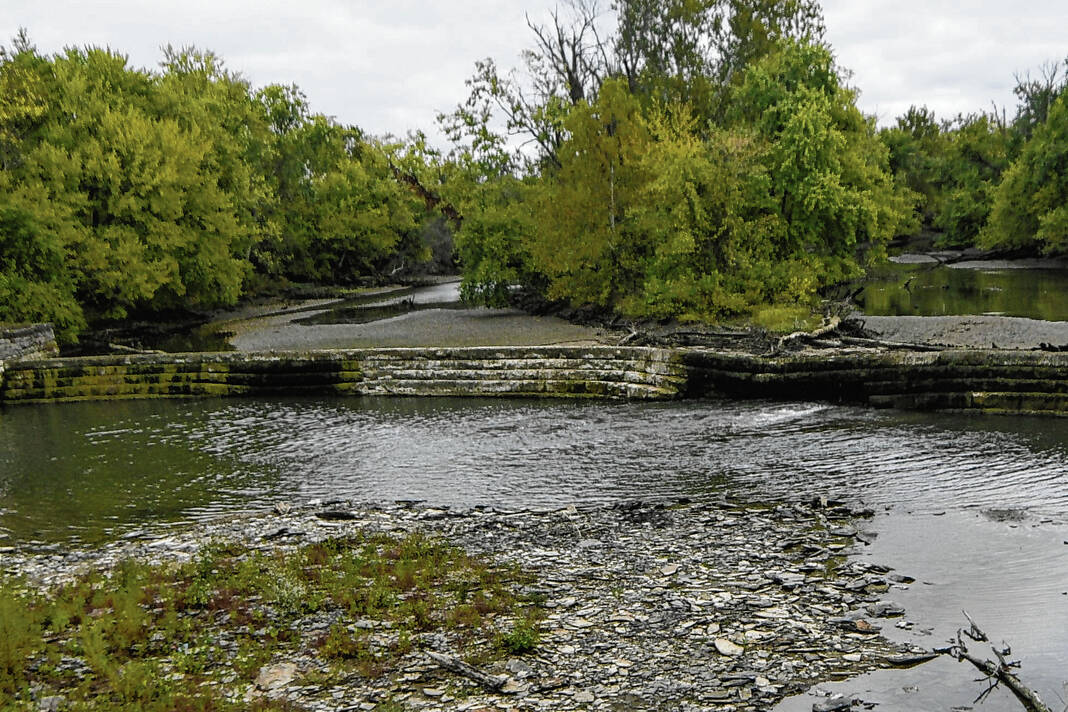A year after the Thompson Mill Dam burst in Edinburgh, the historic structure will soon be torn down.
Work on the Edinburgh dam, which was originally built on the Blue River in 1884, is expected to start sometime between Friday and Monday. The company contracted with Ecosystems Connections Institute will evaluate the dam and determine needed safety measures before physical removal work begins. The pre-work on the demolition is expected to take a few days, town officials said.
The demolition comes at no cost for Edinburgh because of a federal grant, said SaraBeth Drybread, the town’s economic development director.
People are welcome to observe the demolition, however, there will be extra traffic control around State Road 252 and Eisenhower Drive to ensure people are safe, she said.
The demolition is expected to be completed by the end of the year, she said.
Historic significance
The 10-foot limestone dam was initially built by John Thompson, who ran the former Thompson Mill. The dam was created to make sure the mill’s waterwheel had enough water supply, however, it has not been operational since the mill closed in 1957.
The Thompson Mill opened in Edinburgh in 1826 and is said to have been a key supplier of flour to the Union Army during the Civil War, according to a historic marker for the mill. The current dam was built during a rebuilding of the mill following a fire. The 1884 built dam is said to be among the first stone dams to be built in the Midwest, the marker says.
During World War II, Will Irwin of Columbus bought the mill and it generated electricity for Union Starch and Refining Co. The mill was later given to the town and for a time and it generated electricity for town use, the marker says.
The dam doesn’t serve any purpose aside from aesthetics today, but it is a cherished landmark. The river is a popular swimming and fishing spot for the community.
Safety risks
After the dam burst in October 2023, the Edinburgh Town Council invited Jerry Sweeten, a senior ecologist at Ecosystems Connections Institute, to present information on low-head dams and give advice on how to handle the situation.
At that meeting, Sweeten said low-head dams do not prevent flooding and instead were primarily used as barriers to prevent fish passage. Although Sweeten called the dams “culturally historic,” he said the power of the water below the dams is extremely dangerous and can cause death or severe injury if someone were to fall in.
The dam notably caused the death of two Franklin teenagers in 2014, and a third death from injuries related to that incident a few years ago. According to the Indiana Department of Natural Resources, even the strongest swimmers wearing flotation devices have drowned at low-head dams because of the intense water current.
Town officials have had conversations with DNR and there hasn’t been support to restore the dam because of these concerns. DNR is not approving any permits for dam restoration, Drybread said.
The town determined demolishing the structure was the best course of action. Officials say leaving the dam to deteriorate further would be a safety hazard and obstruct recreation on the Blue River.
“One of the other issues is that if the dam were to just fall in on itself and all the stone basically [gets] kind of washed down the riverbed, it would create a lot of debris and obstruction,” she said. “If you’ve got all these stone pieces, people would not be able to kayak … and things like that down the river.
There is not any money availble, including grant monies, to clean that up either, Drybread said.
Additionally, it would take more than a million dollars to repair the dam, which the town doesn’t have, she said.
Remembering the dam
Local artists have painted the dam to remember it and residents have photographed it, and now town officials want to keep a physical piece of it around as well, Drybread said.
“One of the big things that we wanted to make sure that happened for the town was that we commemorate this because the dam is such a huge part of our history and such a positive part of our history,” she said. “[It] really helped put our community on the map and got commerce going here in the community when it was the mill [used] by one of the founding families.”
One idea to reuse the stone is through creating benches in a downtown plaza. The town has also been working with the Johnson County Community Foundation on a commemorative plaque “that tells the story of the dam.” Drybread said the town could use the stone as bookends for that plaque, which would be installed at the plaza.
These plans will all depend on how much stone from the dam can be reused. That won’t be known until the dam starts coming down, Drybread said.
“We do plan to reuse as much of the stone as possible,” she said.


